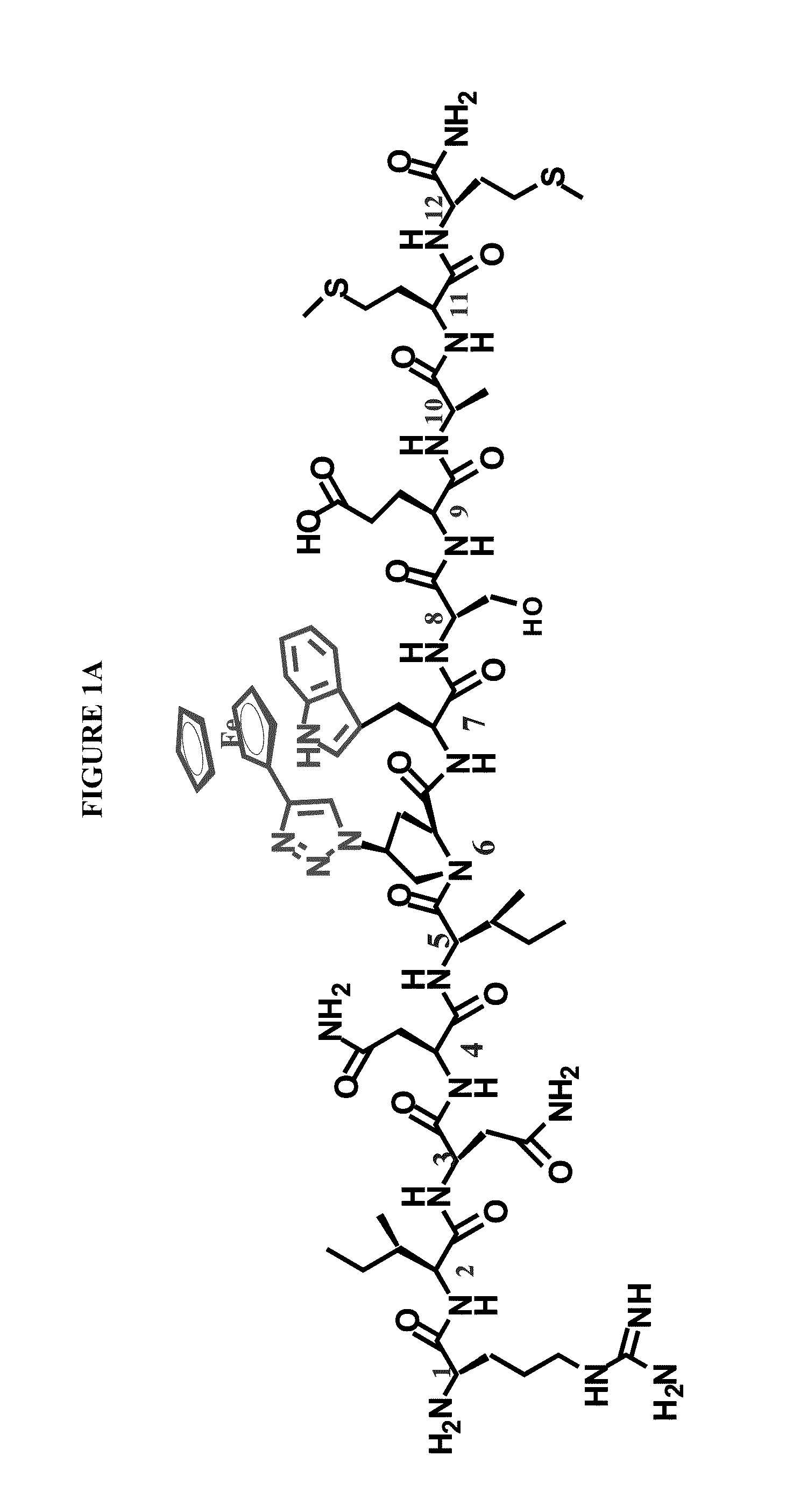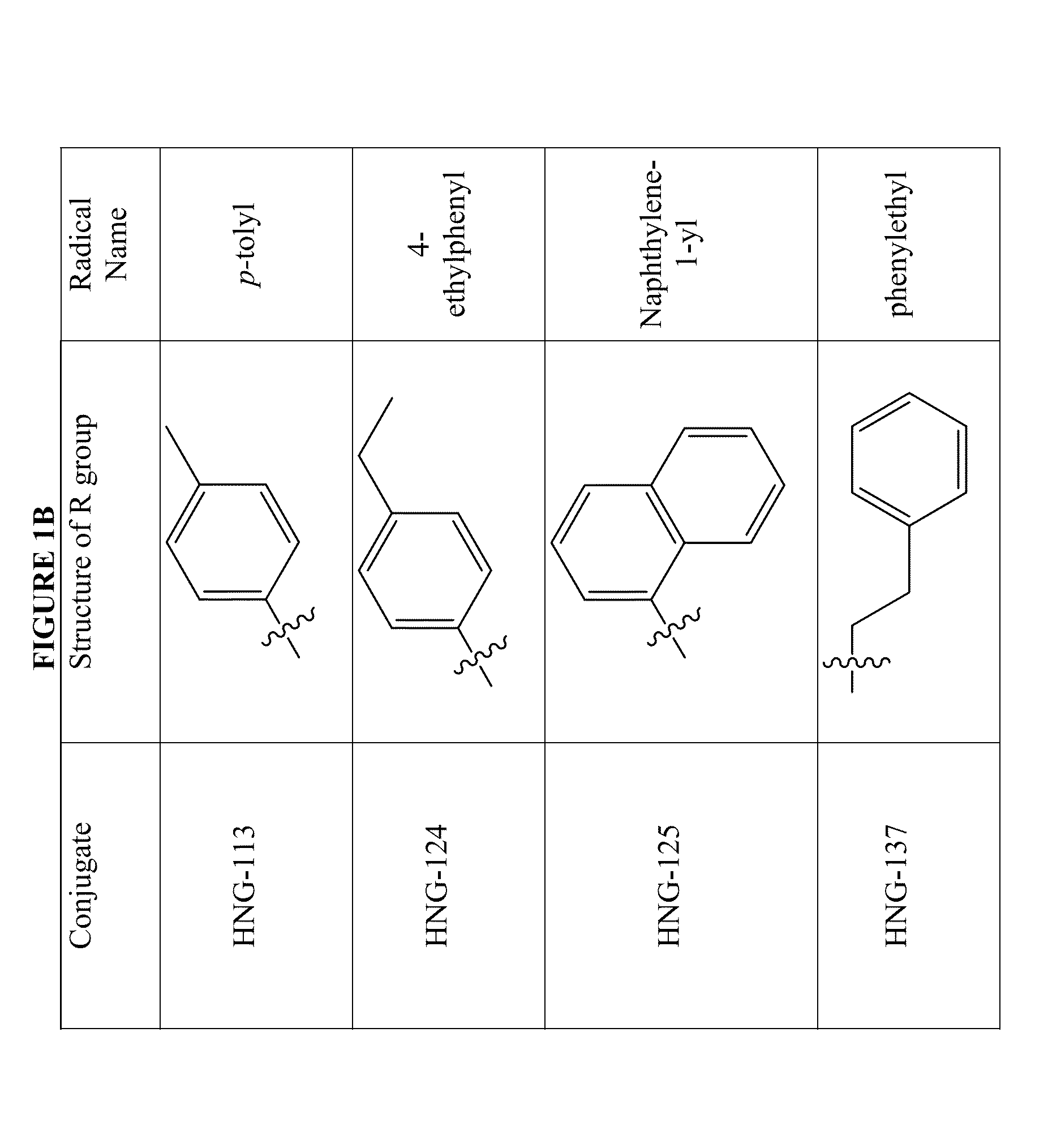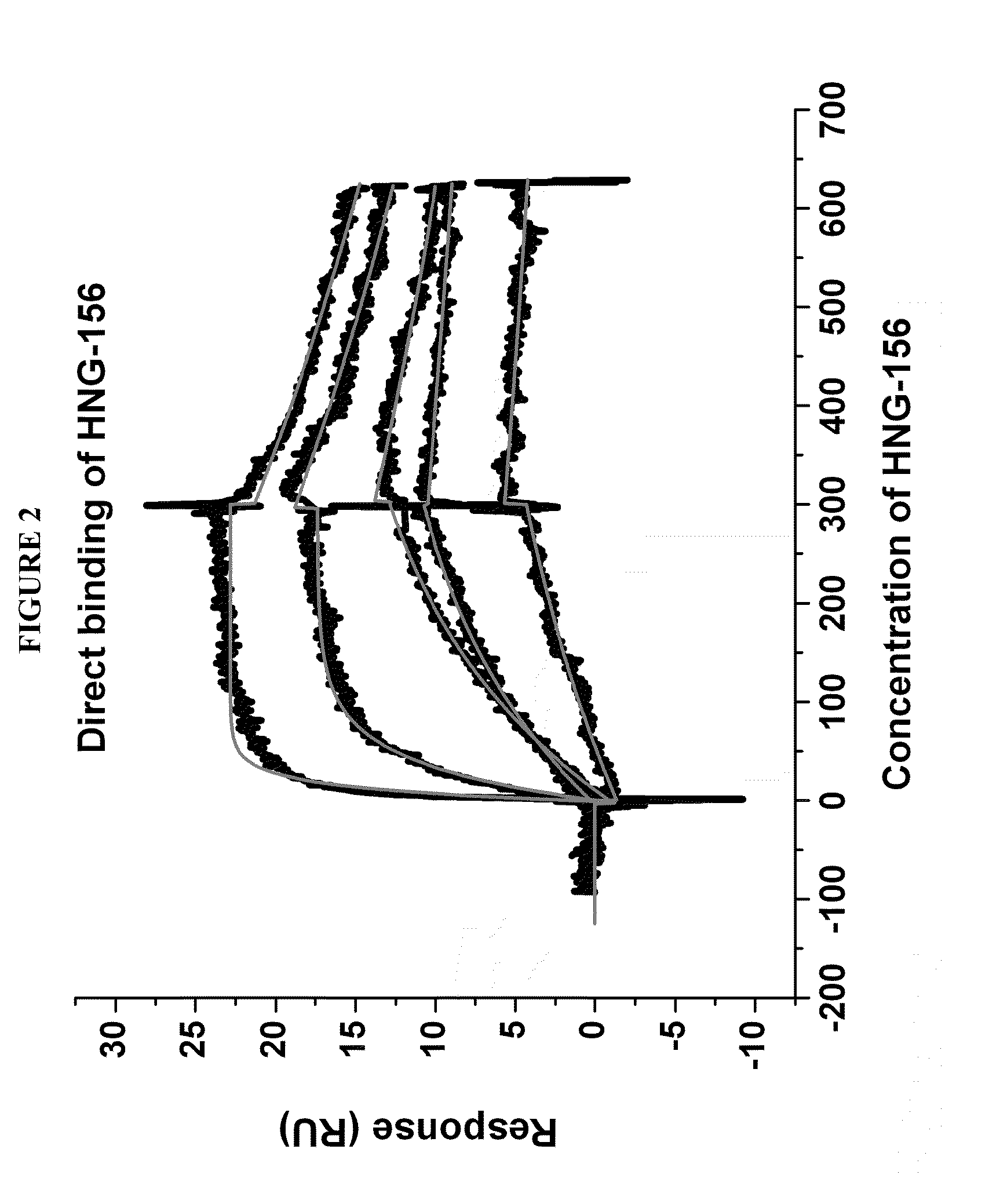Active Cores of Peptide Triazole HIV-1 Entry Inhibitors
a technology of active cores and inhibitors, which is applied in the direction of peptide/protein ingredients, instruments, drug compositions, etc., can solve the problems of inability to cure hiv infection, limited use of cv-n alone as a therapeutic, and on-going development of drug-resistant hiv, so as to reduce the risk of hiv infection
- Summary
- Abstract
- Description
- Claims
- Application Information
AI Technical Summary
Benefits of technology
Problems solved by technology
Method used
Image
Examples
examples
[0193]The invention is further described in detail by reference to the following experimental examples. These examples are provided for purposes of illustration only and are not intended to be limiting unless otherwise specified. Thus, the invention should in no way be construed as being limited to the following examples, but rather, should be construed to encompass any and all variations which become evident as a result of the teaching provided herein.
experimental examples 1-8
[0194]The materials and methods used in the Experimental Examples 1-8 are now described.
[0195]Virus
[0196]HIV-1 strain BaL (catalogue no. 510) was obtained from the NIH AIDS Research and Reference Reagent Program (Division of AIDS, NIAID) from Dr. Suzanne Gartner, Dr. Mikulas Popovic and Dr. Robert Gallo. This strain of HIV-1, which was prepared using primary human cells of monocytic origin, uses CCR5 as its co-receptor.
[0197]Protein Reagents
[0198]HIV-1YU2 gp120 was produced as described previously in Drosophila S2 cells (Biorn et al., 2004, Biochem. 43:1928-1938; Pancera et al., 2005, J. Virol. 79:9954-9969). Cells were spun down and supernatant sterile filtered. Supernatant was purified over an F105-antibody column (NHS-activated Sepharose, Amersham; F105 antibody coupled according to manufacturer's instructions). HIV-1YU2 was eluted from the column with glycine buffer, pH 2.4, dialysed against PBS and frozen at −80° C.
[0199]sCD4 was expressed in CHO cells in a hollow fiber bioreac...
experimental example 1
HNG-156 Binding to HIV-1 Envelope gp120 Protein
[0236]A Biacore 3000 surface plasmon resonance (SPR) optical biosensor was used to assess the direct interactions of HNG-156 with YU2 gp120, 92UG037-08 and SF162. The real-time interactions were monitored by injecting various concentrations of HNG-156 in PBS buffer.
[0237]The kinetic binding parameters and equilibrium constants for the binding of 12p1 (SEQ ID NO. 16) and peptide conjugates derived from click conjugation, HNG-105 and HNG-156, to surface-immobilized gp120 from various HIV-1 strains, determined by direct interaction SPR analysis, are given in the Table 3. Notably, HNG-156 peptide conjugate binds to the HIV-1YU-2gp120 with high affinity, KD=7.4 nM. This affinity is roughly 3-fold higher than HNG-105's affinity, and 3 orders of magnitude higher than 12p1. Direct binding results of conjugate peptide HNG-156 YU2 gp120 are shown in FIG. 2. HNG-156 showed similar potency of binding to a set diverse clade gp120s (Clade A, Clade B ...
PUM
| Property | Measurement | Unit |
|---|---|---|
| mole fraction | aaaaa | aaaaa |
| mole fraction | aaaaa | aaaaa |
| mole fraction | aaaaa | aaaaa |
Abstract
Description
Claims
Application Information
 Login to View More
Login to View More - R&D
- Intellectual Property
- Life Sciences
- Materials
- Tech Scout
- Unparalleled Data Quality
- Higher Quality Content
- 60% Fewer Hallucinations
Browse by: Latest US Patents, China's latest patents, Technical Efficacy Thesaurus, Application Domain, Technology Topic, Popular Technical Reports.
© 2025 PatSnap. All rights reserved.Legal|Privacy policy|Modern Slavery Act Transparency Statement|Sitemap|About US| Contact US: help@patsnap.com



